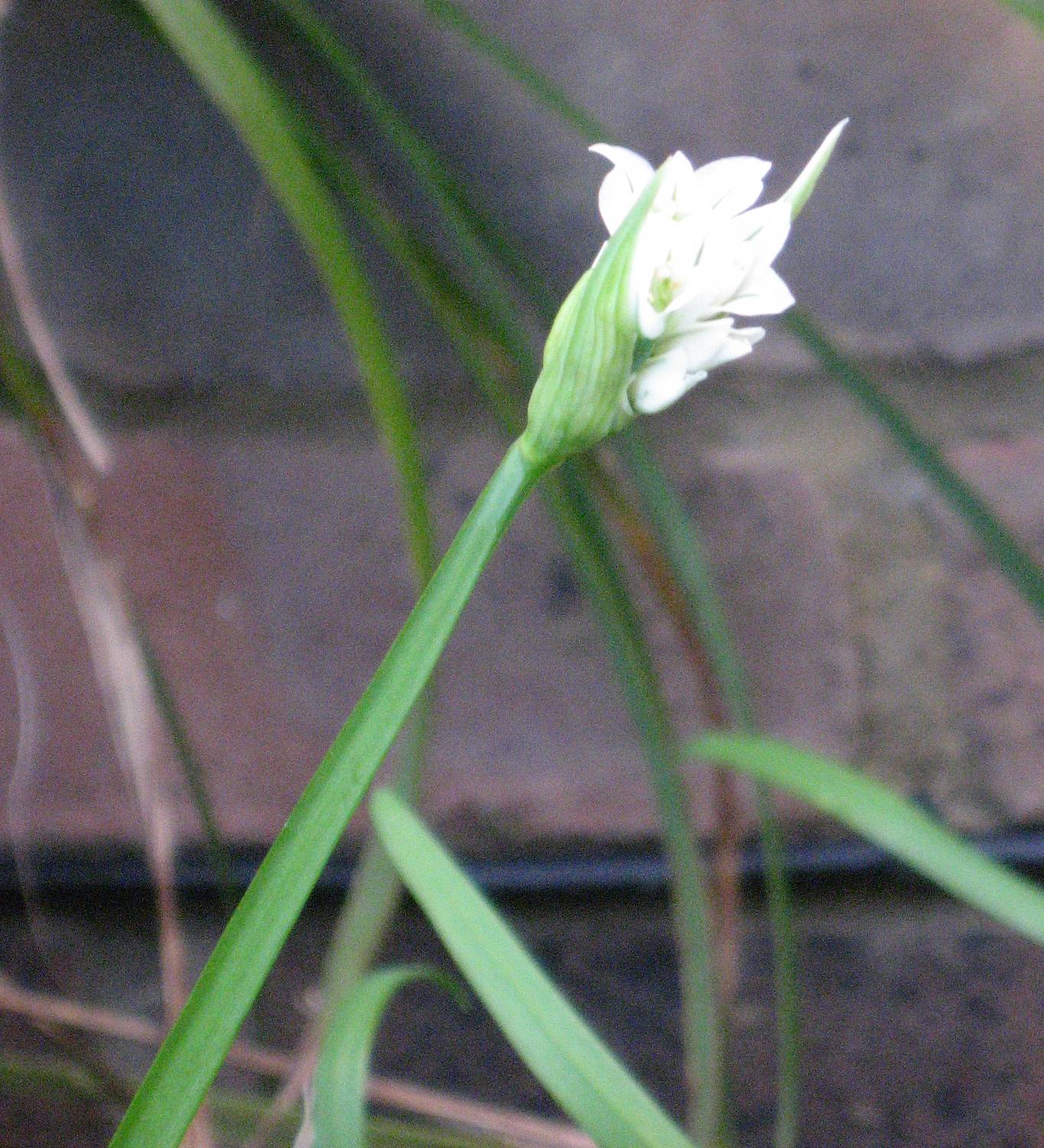
Three-Cornered Garlic - Allium triquetrum
Expand and collapse the sections below by clicking on the title or + / - icons.
Short description of Allium triquetrum, Three-Cornered Garlic
A spring-flowering bulb with white flowers. Leaves resemble those of bluebells after flowering.
Impact summary: Allium triquetrum, Three-Cornered Garlic
It has no serious ecological or economic impact, although it can displace native species where invasive in some regions.
Habitat summary: Allium triquetrum, Three-Cornered Garlic
Usually found on roadside verges.
Overview table
| Environment | Terrestrial |
|---|---|
| Species status | Non-Native |
| Native range | Southwestern Europe, Southeastern Europe, Northern Africa, West Tropical Africa, Canary Is., Madeira |
| Functional type | Land plant |
| Status in England | Non-Native |
| Status in Scotland | Non-Native |
| Status in Wales | Non-Native |
| Location of first record | v.c.113 (Guernsey) |
| Date of first record | 1847 |
Origin
Native to the Mediterranean region.
First Record
First recorded as established in the wild in Guernesy in 1859.
Pathway and Method
It is a common garden plant which escapes when garden waste is dumped on roadsides or more rarely through deliberate planting in wild locations.
Species Status
In GB it is listed on Schedule 9 of the Wildlife & Countryside Act, which makes it an offence to deliberately introduce it. However, it is a popular plant that is widely naturalised on waysides and road verges, where it has the potential to displace native species where invasive.
Dispersal Mechanisms
It is introduced to new locations by accidental or deliberate introduction, and it spreads vegetatively in clumps. Seeds are dispersed by ants or carried along roadsides in the slipstreams of vehicles or possibly as a result of mowing.
Reproduction
Division of clumps allows for reproduction over short distances, while seed dispersal allows for longer-distance spread.
Known Predators/Herbivores
It is considered vulnerable to slug damage, especially in drier areas of the country. It is also vulnerable to mildew.
Resistant Stages
Seeds are largely resistant to herbivory.
Habitat Occupied in GB
Gardens, road verges, coastal grassland, waste ground and, occasionally, arable field edges.
Widely scattered in populated areas as far north as southern Scotland; naturalised mainly in coastal areas and the very south-west.
Environmental Impact
Although it can become abundant, ecosystem impact is likely to be minimal in most areas as it usually occurs on roadside verges of little botanical interest. However, in some areas (e.g. Southwest England, Channel Islands) it can become highly invasive in species-rich roadside and grassland vegetation, displacing native species that are regionally or even nationally important.
Health and Social Impact
None known.
Economic Impact
None known. In Tasmania it is considered likely to taint milk, but cattle are said to avoid it.
Identification
Biology, ecology, spread, vectors
French, C.N., Murphy, R.J. & Atkinson, M.G.C. (1999) Flora of Cornwall. Wheal Seton Press, Camborne.
http:www.bioinfo.org.ukhtmlt47503.htm
Management and impact
http:www.guernsey.net~cdavidbotanyfilesallium%20triquetrum
http:www.weeds.asn.auweedstxtsthree_crngar.htm
General
Preston, C.D., Pearman, D.A. & Dines, T.D. (Eds.) (2002) New Atlas of the British and Irish flora. Oxford: Oxford University Press.
Spotted this species?
Distribution map
View the Distribution map for Three-Cornered Garlic, Allium triquetrum from BSBI
Risk assessment
Risk assessment for Allium triquetum. See a full list of non-native species Risk assessments.
ID Sheet
ID Sheet for Allium triquetrum. See a full list of non-native species ID Sheets.
Legislation
Three-Cornered Garlic, Allium triquetrum, is listed under Schedule 9 of the Wildlife and Countryside Act 1981. Read more about Non-native species legislation.





